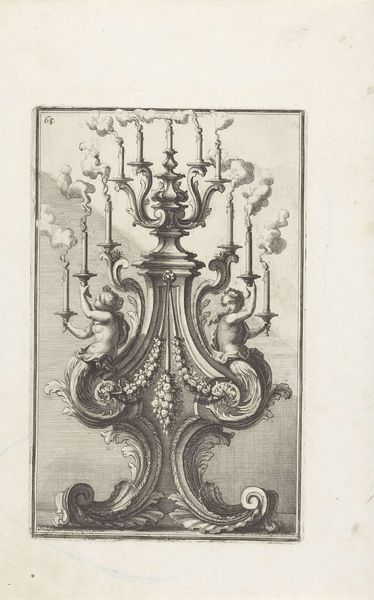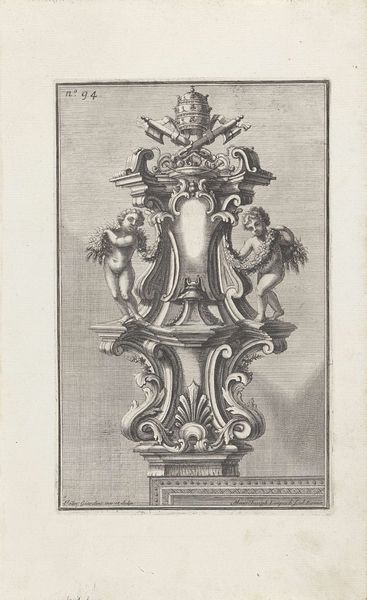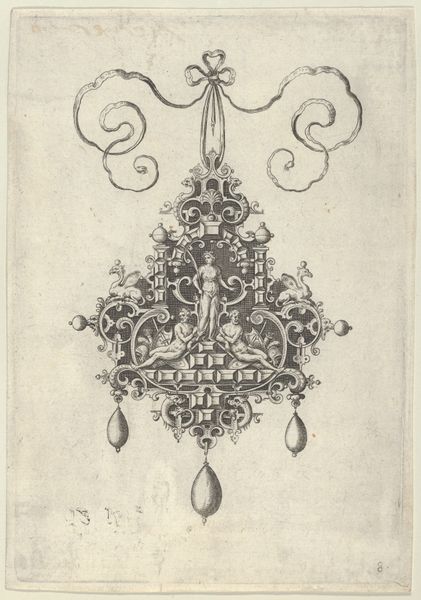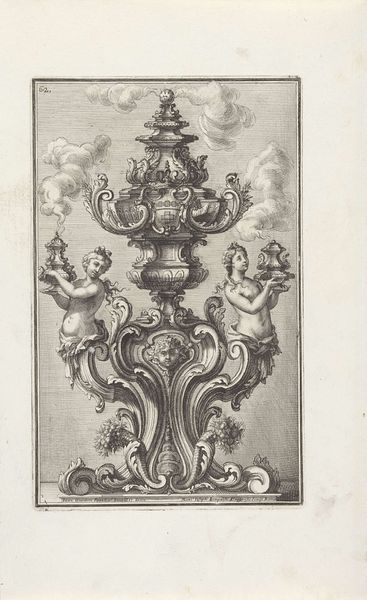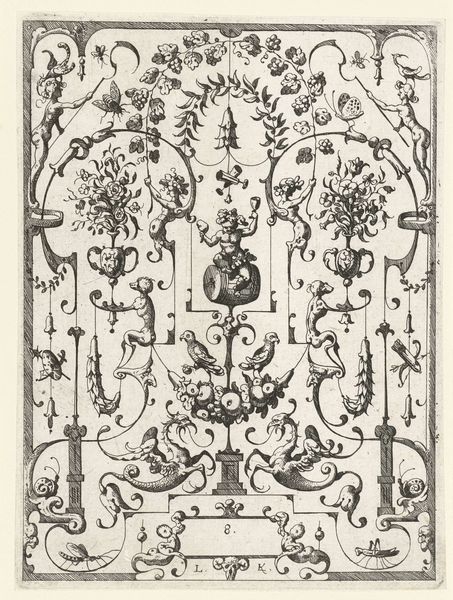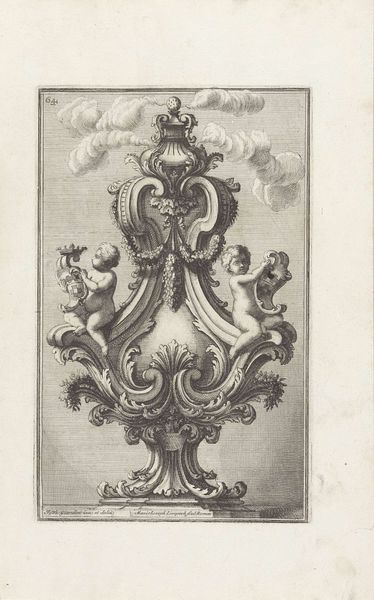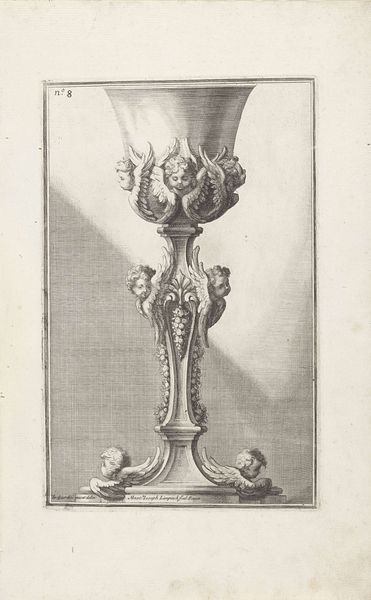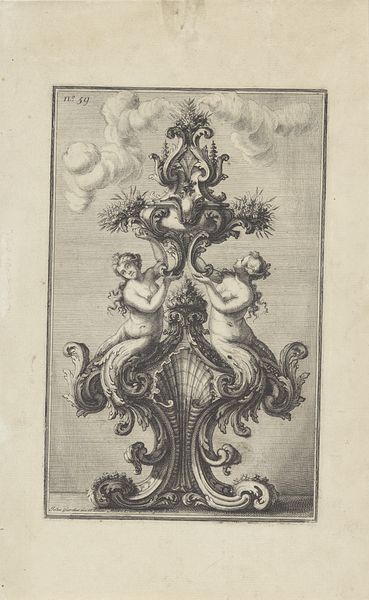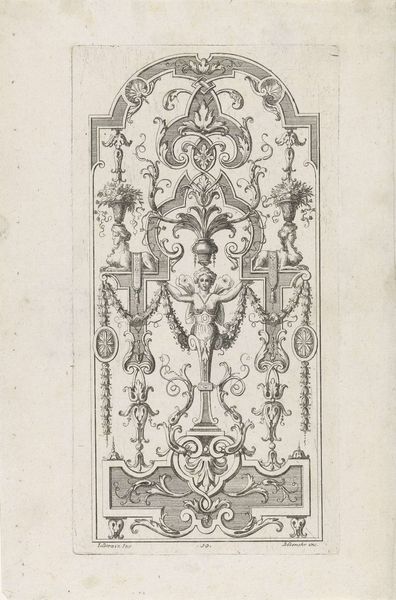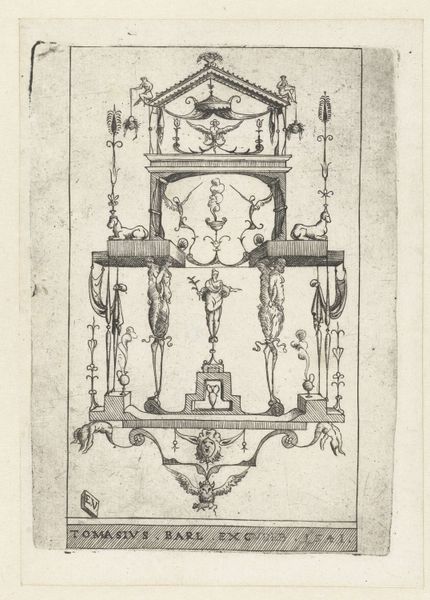
Kroonluchter met twee leeuwen, een adelaar en een wapenschild 1714
0:00
0:00
maximilianjosephlimpach
Rijksmuseum
print, metal, engraving
#
baroque
# print
#
metal
#
figuration
#
decorative-art
#
engraving
Dimensions: height 275 mm, width 174 mm
Copyright: Rijks Museum: Open Domain
Curator: A dizzying play of symmetrical form! This engraving from 1714 by Maximilian Joseph Limpach depicts a chandelier, "Kroonluchter met twee leeuwen, een adelaar en een wapenschild," featuring two lions, an eagle, and a coat of arms. Editor: It certainly feels busy. At first glance, I'm struck by the intricate layering, almost claustrophobic, but also incredibly decorative. What’s drawing my attention is its verticality and overall sense of opulent artifice, emphasized by the medium of print, giving a certain stiffness despite all the curls. Curator: Indeed! The arrangement of figures – the heraldic eagle and the majestic lions – evokes concepts of power, status, and nobility. They’re supporting illumination itself, as if light and authority are intertwined. We must consider the cultural symbolism. Lions have represented courage and royalty across cultures for centuries, while eagles are symbols of dominion and divine right. The coat of arms, of course, signifies a specific lineage or institution claiming these values. Editor: The symmetry is fascinating, how each element reflects another, enhancing that idea of rigid control, perfect and almost cold. Even the smoke from the candles seems rigidly controlled! It speaks to a certain type of order, imposed on potentially chaotic elements. Curator: Precisely. This controlled, almost performative display of wealth would have been integral to baroque courtly life. Chandeliers of this type acted as focal points, signifying power and culture as light spread into even the darkest corners. This print disseminated these objects’ implicit statements even further. Consider who would have commissioned or purchased an engraving of such an ornate fixture – likely those aspiring to emulate the ruling elite, expanding its cultural footprint. Editor: And the choice of engraving underscores that replicability, and the attempt to mimic high-class décor by the upper middle classes and even other noblemen that did not hold a symbol or representation in these chandeliers; making wealth visible in even mundane aspects of daily life, but in a controlled, perfectly rendered image. The precision offered by this printing style is key to this message! Curator: Indeed. These visual echoes reinforce dominant power structures through domestic displays, constantly reminding one of order and the divine sanction. It’s intriguing how form embodies ideology. Editor: It makes you think how even an object created for illumination casts a long shadow, shaping perception. Thank you for clarifying its design intentions.
Comments
No comments
Be the first to comment and join the conversation on the ultimate creative platform.

